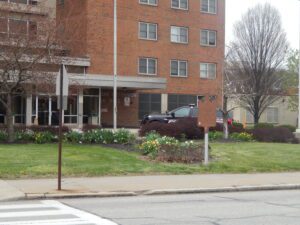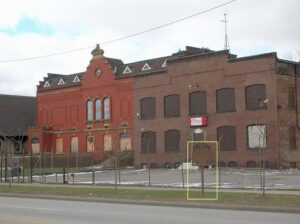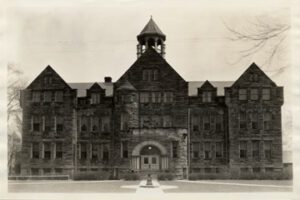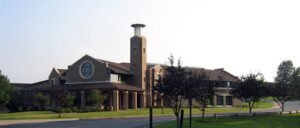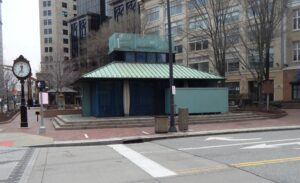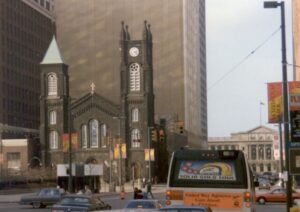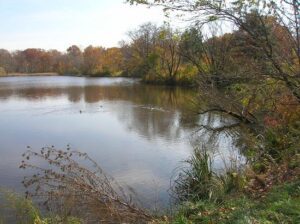, OH
John Malvin (1795-1880) was an operative on the Underground Railroad and an ardent member of anti-slavery and abolitionist causes. Born in Dumfries, Virginia of a free mother and enslaved father, Malvin was apprenticed at an early age to learn carpentry and taught himself to read and write. In 1827, he moved to Cincinnati where he became an ordained preacher and an activist in the cause of freedom. In 1831, with his wife Harriet, he moved to Cleveland where he became a charter member of the First Baptist Church, a sawmill operator, and captain and owner of the canal boat Auburn. (continued on other side)
, OH
Garrett Augustus Morgan was an African American businessman and prolific inventor of devices that made people’s lives safer and more convenient. Born on March 4, 1877 in Claysville, the Black segregated section of Paris, Kentucky, Morgan migrated north first to Cincinnati and then Cleveland in 1895. He lived and worked in this house at 5204 Harlem Avenue. In 1906, Morgan started the G.A. Morgan Hair Refining Company to market the hair straightener he had invented. The following year he opened a sewing machine repair shop. In 1908, he and his wife Mary opened Morgan’s Cut Rate Ladies Clothing Store. (continued on other side)
, OH
In 1845, Baldwin Institute, one of the first schools in the area open to all students regardless of gender, race, or creed, was chartered. The wealth generated by the sandstone and grindstone industries of Berea allowed John Baldwin to found the school. Ten years later, officials rechartered the school and renamed it Baldwin University. By the 1880s, the expanding quarries began to encroach on the original campus of the university, forcing it to relocate. In 1891, ground was broken for the new campus at the corner of Front Street and Bagley Road. Recitation Hall, renamed Wheeler Hall, was the first new building, followed by the Philura Gould Baldwin Memorial Library in 1894. In 1905, through the funding of the Carnegie Foundation, the Ladies Hall, renamed Carnegie Hall, was moved stone by stone to the new campus to serve as the science building. Baldwin University merged with German-Wallace College in 1913 to become Baldwin-Wallace College.
, OH
The first women’s college chartered in the state of Ohio, Ursuline College opened in 1871 in downtown Cleveland as part of the educational mission of the Order of St. Ursula (O.S.U.). Founded in Italy in 1535 with an early presence in North America, this order established its first religious teaching community in Cleveland in 1850, led by foundress Mother Mary of the Annunciation Beaumont, O.S.U. The college’s growth prompted four moves in Cleveland and subsequently to the Pepper Pike campus in 1966. Ursuline holds the distinction as one of the first catholic women’s colleges in the United States organized and chartered explicitly for college education.
, OH
Dedicated in 1939 in a ceremony that turned the gardens over to the city, the Cleveland Cultural Gardens are a unique memorial to world peace and the celebration of cultural diversity. The Gardens date to 1916 when the Shakespeare garden was built, and are a celebration of cultural identity in the form of natural landscaping, formal architectural elements, and commemorative sculpture. Consisting of 23 individual gardens, the Gardens reflect the diversity of cultures that shaped Cleveland and the nation. The Gardens pay tribute to the many philosophers, scientists, composers, and other great thinkers who have made significant and lasting contributions to civilization. More importantly, the Gardens are symbolic of the fact that through preservation of many different traditions, beliefs, and practices, we may be better able to accept and respect one another – that we may achieve a true and lasting peace through mutual understanding.
, OH
On October 31, 1963, the actions of Cleveland Police Detective Martin J. McFadden led to a new legal standard allowing police officers in the United States to stop and frisk suspicious persons prior to committing a crime. On that day McFadden had spotted three men loitering outside a jewelry store at 1276 Euclid Avenue. Believing a robbery was about to take place, the 38-year veteran stopped the men and checked them for weapons. Two of them had guns and were charged with, and convicted of, carrying concealed weapons. The law at the time allowed officers to stop a suspect only after a crime was committed. They appealed their case all the way to the United States Supreme Court. In a landmark decision on June 10, 1968, Chief Justice Earl Warren delivered the court’s opinion that McFadden’s action, called a “Terry Stop” after one of the suspects, was justifiable.
, OH
Religious worship began on this site in 1820 as a Plan of the Union Sunday School with ministers recruited by the Connecticut Home Missionary Society. Its first stone church, officially known as the First Presbyterian Church of Cleveland, was built and dedicated on February 26, 1834, but as the congregation grew, a second stone church was constructed and finished on August 12, 1855. Built of Berea Sandstone, it stands now as the oldest building on Public Square. Ravaged by fires in 1857 and 1884, the church was rebuilt according to the original plans, and the 1884 interior restored by East Coast architect, Charles W. Schweinfurth. From 1965 to 1983, the chapel served as the worship center for the Cleveland Chinese Christian Church.
, OH
In 1822, Ralph Russell, a Connecticut pioneer who had settled in Warrensville Township ten years earlier, founded the North Union Shaker Community. The Shakers created Horseshoe Lake in 1852 when they built a dam across Doan Brook and harnessed its waterpower to operate a woolen mill near Lee Road and South Park Boulevard. The community disbanded in 1889; its 1,366 acres were eventually sold to a real estate syndicate from Buffalo, New York, the Shaker Heights Land Company. In 1896, this group deeded the Shaker Lakes Parklands to the City of Cleveland to preserve the green space in perpetuity. Ten years later, the Van Sweringen Company began to develop Shaker Heights Village as a Garden City suburb where William J. Van Aken served as mayor from 1915 until 1950. In the 1960s local residents successfully fought the proposed Clark Freeway, saving Horseshoe Lake and the Parklands from destruction.


